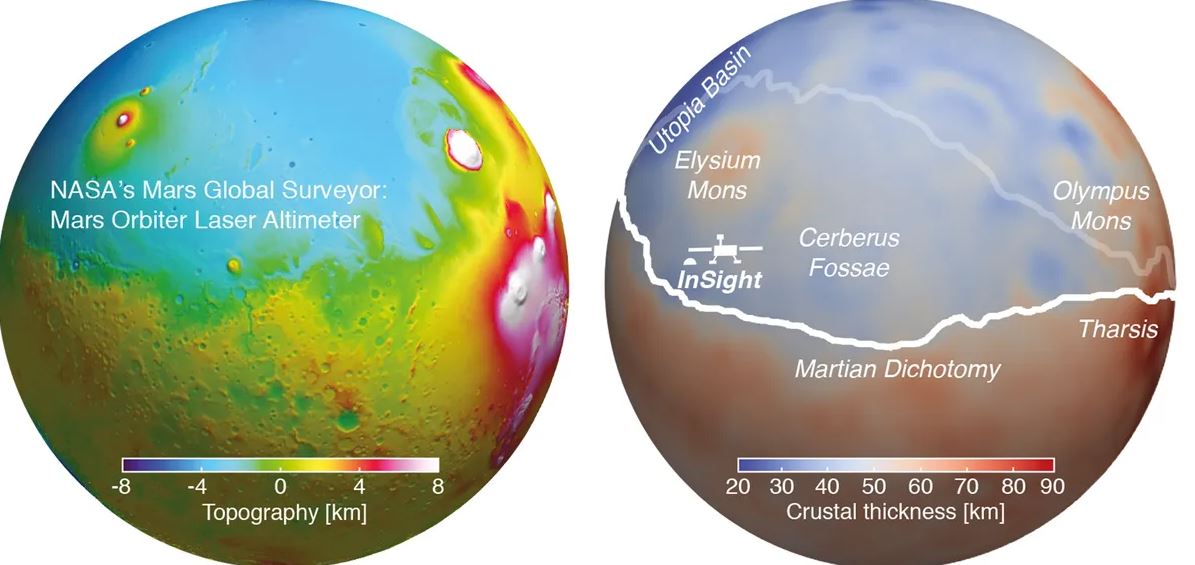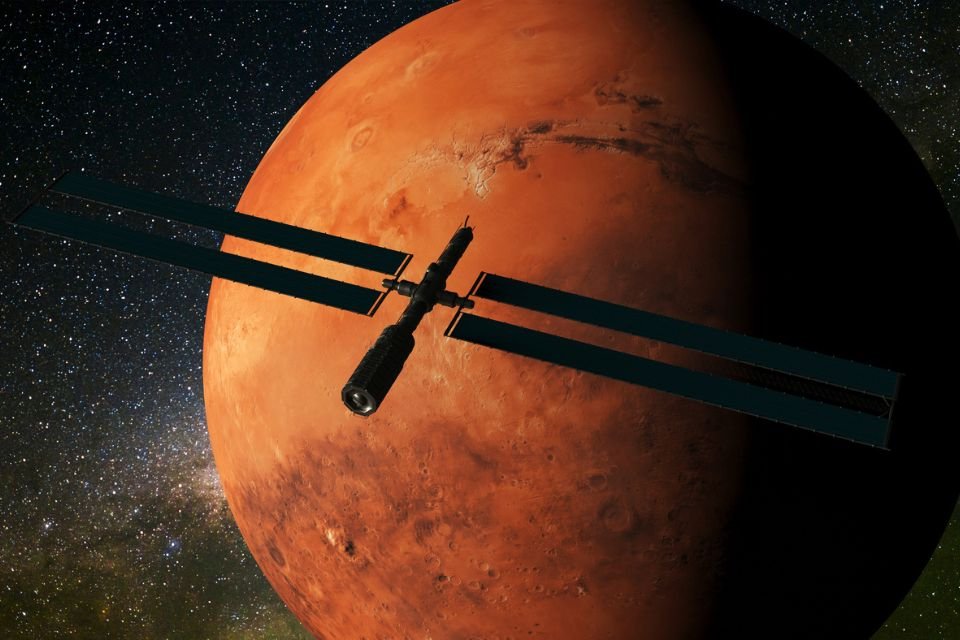In a preliminary edition of a study scheduled for publication in the journal Geophysical Research Letters, researchers from the ETH Zurich university in Switzerland claim: Mars’ crust is much thicker than terrestrial and lunar crusts.. The team also discovered that the main source of heat on the red planet is the result of the emission of radioactivity.
Using an earthquake recorded by InSight in 2022, they analyzed seismic data from a 4.6-magnitude tremor that spread through the Martian crust. By searching the information, they were able to calculate the values of this outer layer: The findings state that the crust is, on average, 42 to 56 kilometers thick..
That is, since the Earth’s crust averages between 21 and 27 kilometers, this means that Mars has a much greater thickness compared to Earth. In fact, it is also thicker than the Moon’s crust, which is 34 to 43 kilometers thick.
Another important point that scientists observe is the difference between the northern and southern hemispheres of Mars. this difference is known as the Mars dilemma. they also explain The heat radiated inside Mars occurs through radioactive materials such as thorium, uranium, and potassium. — no wonder that up to 70% of these elements are found in the Martian crust.
“This means that the Martian crust is much thicker than that of the Earth or the Moon. We were lucky enough to observe this earthquake. On Earth, we would have had trouble determining the thickness of the Earth’s crust using the same magnitude as the earthquake that occurred. Seismologist and lead author of the study, Doyeon “Although Mars is smaller than Earth, it transports seismic energy more efficiently,” said Kim.

martian crust
To perform the discovery, Researchers collected data from Mars using seismic activity instruments aboard InSight, a probe sent by NASA to the red planet. The information has been tracked for over three years, and in addition to discovering more details about some specific areas, scientists have been able to get a more complete view of Mars.
According to Kim, the research could help end the debate about the origin of the Martian crust. They even detailed that the thinnest outer layer of Mars is found in the Isidis impact basin (10 km thick), the thickest in Tharsis province (90 km), and that the crusts of both regions are made of the same material.
“We now have seismic observations that represent the global structure. [de Marte]said Kim.
Source: Tec Mundo
I’m Blaine Morgan, an experienced journalist and writer with over 8 years of experience in the tech industry. My expertise lies in writing about technology news and trends, covering everything from cutting-edge gadgets to emerging software developments. I’ve written for several leading publications including Gadget Onus where I am an author.












